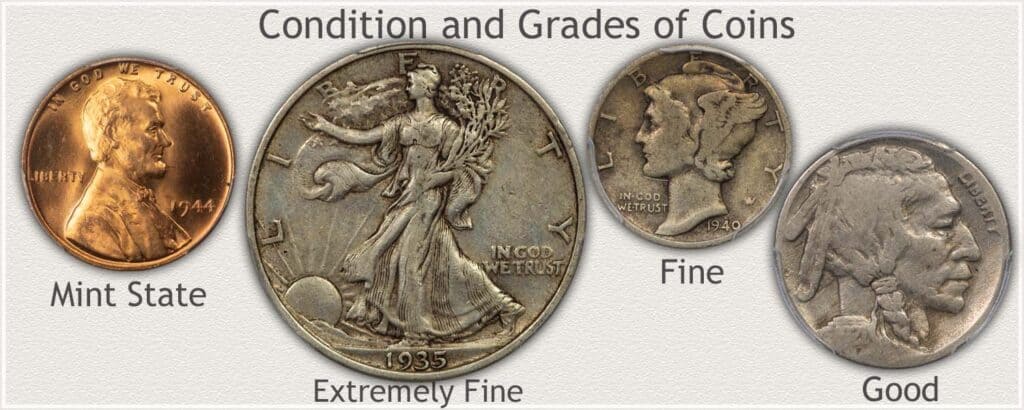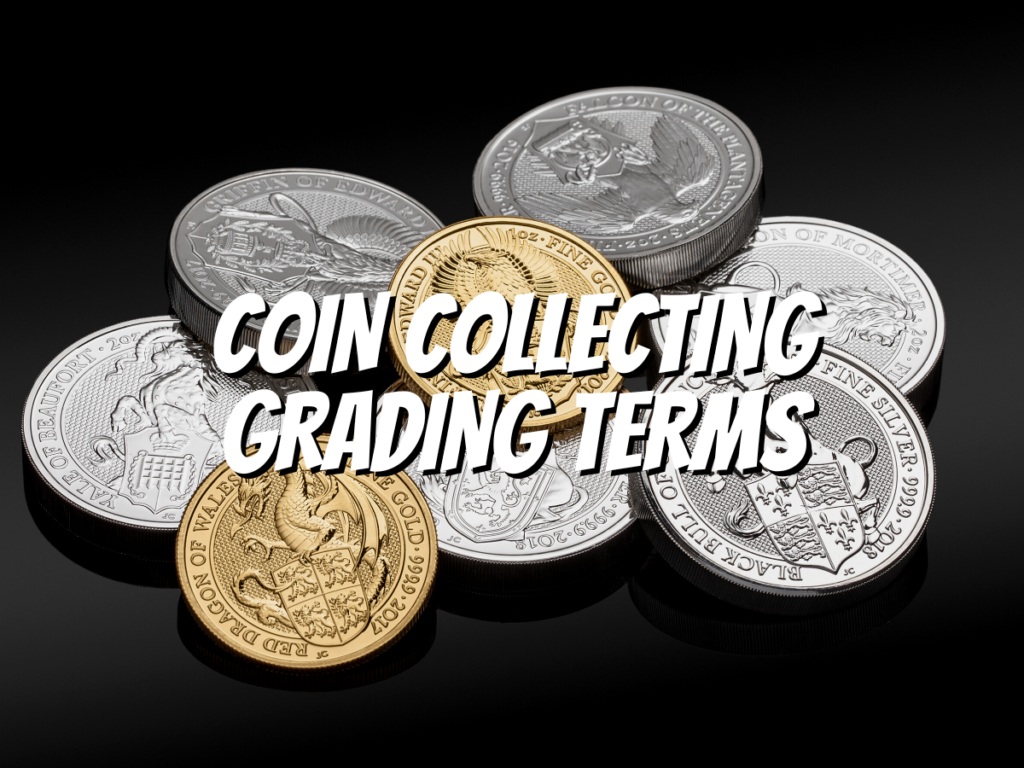What are the coin collecting grading terms? In the world of numismatics, there are different grades for coins!
There are certain grades for circulated, uncirculated, ancient, and proof coins!
In this article, we’ll look at these grades and how they differ! So, what are we waiting for? Let’s dive in!
What Do COIN COLLECTING Grading Terms Mean?
Coin grading terms are used to describe the condition of a coin. They are also used to identify the quality of a coin.
Coin grading terms are vital when determining the value of a coin, as they give insight into its condition and identify whether it is rare.
How Many Grades of Coins Are There?
A coin’s grade is a numerical value representing the coin’s condition.
Coins are graded on a scale of 1-70, with 70 being the highest quality and 1 being the lowest quality.
The grading process is used to compare coins against the standards set forth by the industry and is a way for collectors to know what they’re buying before they buy it.
The most common coins collected are graded using the Sheldon Scale, developed by Dr. William H Sheldon Jr. in 1946 as an easy way for collectors to judge their coins without knowing about them.
How are Coins being Graded?
Coins are graded based on their condition. This means that you determine the value of your coin based on its grade, which is a number from 1 to 70.
The higher the grade, the better shape it’s in and, therefore, more valuable. You can get your coins graded by “graders,” who use a grading scale based on the Sheldon scale (a ten-point system used to describe a coin’s condition).
Grades of Coins
Circulated Coins:

- (P-1) Poor – Barely identifiable and damaged; the coin must have a date and mintmark if used.
- (FR-2) Fair – Worn, but details are still identifiable, unlike poorly graded coins. The details are enough to identify the coin.
- (G-4) Good – Major features might have been damaged or even obliterated, but they still have features to identify the coin easily.
- (VG-8) Very Good- Major design elements are apparent, maybe faint.
- (F-12) Fine – Still worn, but overall design stands out boldly.
- (VF-20) Very Fine – Moderately worn but finer details. Texts are readable on coins.
- (EF-40) Extremely Fine – Slightly worn, but all designs and details are bold.
- (AU-50) About Uncirculated – There are slight traces of wear on the coin’s design due to minting, etc.
- (AU-58) Very Choice About Uncirculated – Slightest hints of wear marks, no significant contact marks, almost full mint luster, and positive eye appeal.
Uncirculated Coins

- (MS-60) Mint State Basal – Strictly uncirculated; no evidence of wear on the highest points of the coin but an ugly coin with subdued luster, noticeable contact marks, hairlines, etc.
- (MS-63) Mint State Acceptable – Uncirculated, but with contact marks and nicks, slightly impaired luster, fundamentally appealing appearance. The strike is average to weak.
- (MS-65) Mint State Choice – Uncirculated with strong mint luster, few contact marks, and excellent eye appeal. The strike is above average.
- (MS-68) Mint State Premium Quality – Uncirculated with perfect luster, no visible contact marks to the naked eye, exceptional eye appeal. The strike is sharp and attractive.
- (MS-69) Mint State Almost Perfect – Uncirculated with perfect luster, sharp and attractive strike, and exceptional eye appeal. A perfect coin except for tiny flaws (only visible under 8x magnification) in planchet, strike, or contact marks.
- (MS-70) Mint State Perfect – The perfect coin. No microscopic flaws are visible under 8x magnification; the strike is sharp, and the coin is centered on a perfect planchet. Bright and complete, original luster and outstanding eye appeal are rarely seen on a coin.
Ancient Coins

- Good – The coin may have less than 30% of the original inscription and design. The coin can be attributed to ruler and type.
- Very Good – The coin may have over 30% of the original inscription and design. In addition, major planchet defects (e.g., pitting, cracks, irregularly shaped flan) are common in this grade.
- Fine – The coin has at least 50% of the original inscription and almost all of the original design. Major planchet defects may be evident.
- Very Fine – All detail should be visible, with some wear on the high points. In addition, minor planchet defects may be evident.
- Extremely Fine – Minor wear is visible except on the highest portions of the coin design. The coin is well-centered with few if any, planchet defects. At least 90% of the inscription is legible.
- Mint State – The coin has no visible wear from circulation. The coin may be toned.
Proof Coins

- Proof coins are made by a unique process using carefully selected coin blanks and dies, which are meticulously polished and burnished to remove imperfections.
- The coin is struck twice, slowly and with extra pressure. For it to produce high-relief features contrasted against deep mirrorlike surfaces. The dies are polished and replaced after only a few strikes.
- The finished Proof coins are inspected to strict standards, handled only with gloves or tongs, and specially packaged for delivery to collectors.
Before you go…
In summary, grading coins is an essential part of coin collecting. It allows you to determine the condition of a coin and, therefore, its value. However, there are many different coin grading terms, so educate yourself before buying coins!
Check out my next article: “Does PCGS Grade Cleaned Coins?“
Related Articles:

